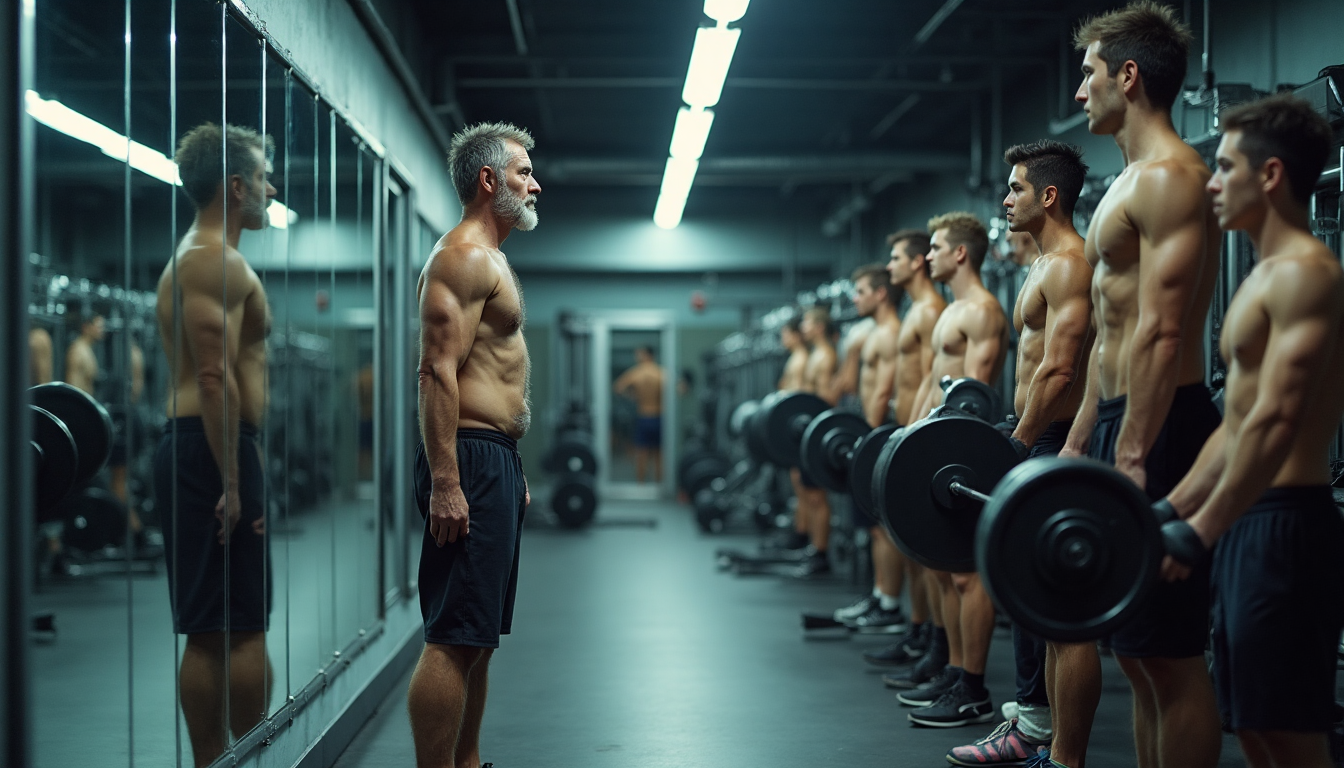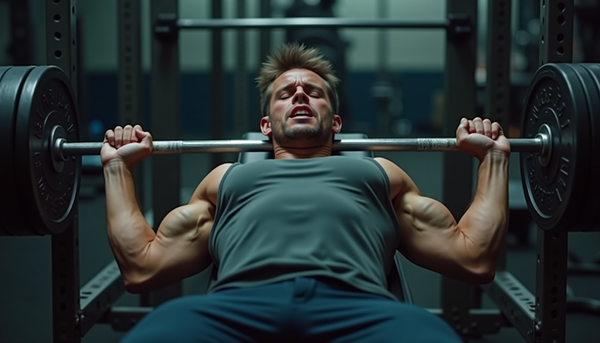Why I Quit the Gym Rat Race for Kettlebells (And You Should Too)

Why I Quit the Gym Rat Race for Kettlebells (And You Should Too)
Let me paint you a picture. It's 2018, I'm 35, and I'm standing in a commercial gym feeling like a absolute fraud. Around me, twenty-somethings are deadlifting twice their bodyweight while I'm over here struggling to figure out which end of a barbell to grab. The mirrors everywhere reflecting back my dad bod in all its glory. The Instagram fitness models doing things that defy physics. The unspoken hierarchy where your worth is measured by how much you can bench.
Sound familiar? Yeah, I thought so.
Here's the thing nobody talks about: traditional fitness culture is broken. Like, fundamentally, completely broken. It's designed for a tiny percentage of genetic lottery winners and leaves the rest of us feeling like garbage about ourselves.
But what if I told you there's a sport that was literally designed for people like us? People who aren't trying to become the next Mr. Olympia but just want to feel strong and capable in their own skin?
Enter kettlebell sport. And before you roll your eyes thinking this is another fitness fad, hear me out.
The Problem with "Normal" Gyms (Spoiler: It's Everything)
I spent years bouncing between gym memberships like a fitness nomad. Each time thinking THIS would be the gym where I finally got my shit together. Each time walking away feeling more defeated than when I started.
The issues are everywhere:
- Equipment designed for people who are already strong
- Unspoken rules nobody explains to you
- Programs that assume you have the flexibility of a gymnast and the time commitment of a professional athlete
- An atmosphere that ranges from "mildly intimidating" to "actively hostile"
And don't even get me started on the injury rates. I've seen more people hurt themselves in traditional gyms than in actual combat sports. Why? Because the culture prioritizes lifting heavy over lifting smart. Because form is secondary to ego. Because "no pain, no gain" is treated like gospel instead of the dangerous oversimplification it is.
What Even IS Kettlebell Sport?
Okay, quick backstory. Kettlebell sport (or girevoy sport if you want to sound fancy and Russian) is basically endurance weightlifting. You take these cannonball-looking weights and you lift them for 10 minutes straight. Sounds simple, right?
Wrong. It's simple in concept but devilishly complex in execution. And that complexity is exactly what makes it perfect for people who are tired of meathead culture.
See, in kettlebell sport, the heaviest weight men use is 32kg (about 70 lbs). That's it. Professional level men top out at 70 pounds per hand. Compare that to powerlifting where people are squatting 500+ pounds, or Olympic lifting where technique takes decades to master.
But here's where it gets interesting: that "light" weight becomes absolutely brutal when you're lifting it for 600 seconds straight. It becomes less about how strong you are and more about how efficiently you can move, how well you can breathe, and how much you can endure mental discomfort.
In other words, it's about developing skills that actually matter in real life.
Why This Sport is Built Different (And Why That Matters)
It's Actually Inclusive (Not Fake Instagram Inclusive)
I've been to kettlebell competitions. The age range is insane. I've seen 13-year-old kids competing alongside 70-year-old grandparents. Women in their 40s out-lifting men half their age. Bodies of every conceivable shape and size.
This isn't some feel-good marketing bullshit. It's the natural result of a sport that values technique and endurance over raw power.
At the world championships in Hamburg, the youngest competitor was 13. The oldest was in their 70s. Try finding that range at a powerlifting meet or bodybuilding show. I'll wait.
Your Body Type Doesn't Doom You
In most sports, genetics is destiny. Basketball players need to be tall. Swimmers need long arms. Gymnasts need to be compact.
In kettlebell sport? I've seen champions who are built like linebackers and champions who look like they'd blow away in a strong wind. The sport adapts to YOU, not the other way around.
Why? Because technique can be modified to work with your proportions. Short arms? Your coach will teach you modifications. Long torso? Different modifications. The movements are flexible enough to work with whatever body you brought to the party.
It Won't Break You
Remember how I mentioned injury rates in traditional gyms? Kettlebell sport is the opposite. The injury rate is remarkably low because the entire philosophy is built around sustainability.
You're not grinding out 1-rep maxes that stress every joint in your body. You're not doing explosive movements that require perfect timing to avoid disaster. You're doing controlled, repeatable movements with moderate weights.
This means you can start at 35 (like I did) or 45 or 55 and still progress. It means you can have a 20-year athletic career instead of burning out after 2 years.
It's Cheap (No, Really)
My entire gear setup cost less than three months at my old gym. A pair of kettlebells, some wrist guards, maybe lifting shoes if you're feeling fancy. That's it.
Compare that to:
- Gym memberships ($50-100/month forever)
- Personal training ($100+/session)
- Specialized equipment for other sports
- The constant upgrade pressure in gear-heavy sports
Hell, getting coaching from literal world champions costs less than a session with some random personal trainer at 24 Hour Fitness.
My Transformation (Warning: Gets Sappy)
I'm not going to lie to you and say I went from zero to hero overnight. That's not how this works.
But something fundamental shifted when I started kettlebell sport. For the first time in my adult life, I had a fitness goal that wasn't about how I looked. It was about what I could DO.
Instead of chasing some impossible physique, I was chasing better technique. Instead of comparing myself to genetic freaks on Instagram, I was competing against my own previous performances.
The cardiovascular gains were immediate. Within weeks, I could climb stairs without getting winded. My chronic back pain (thanks, desk job) started disappearing as my posterior chain got stronger.
But the mental shift was even bigger. Ten-minute sets teach you things about yourself that you can't learn any other way. They teach you that your mind will try to quit long before your body actually needs to. They teach you that discomfort is temporary and manageable.
These aren't gym insights. These are life insights.
The Community Aspect (AKA Why I Actually Look Forward to Competitions)
Here's something wild: kettlebell sport competitions are... fun?
I know, I know. "Competition" and "fun" don't usually go together. But the atmosphere at these events is completely different from what you'd expect.
People are genuinely rooting for each other. Veterans are giving technique tips to newcomers. There's this understanding that we're all out there suffering together, so why not support each other through it?
Part of this comes from the nature of the sport itself. You're not really competing against other people—you're competing against yourself. Everyone knows how much it sucks to be 6 minutes into a 10-minute set with your muscles screaming and your lungs burning. There's mutual respect born from shared suffering.
Getting Started (The Part Where I Actually Help You)
Okay, enough philosophy. You want practical advice? Here it is.
Step 1: Find a coach. Don't try to learn this from YouTube. Just don't. The technique looks simple but has about 47 subtle details that matter. Find someone who actually knows girevoy sport, not just general kettlebell training.
Step 2: Start stupidly light. Women usually start with 8kg bells. Men with 16kg. Yes, it feels ridiculously easy at first. That's the point. You're learning to move efficiently, not proving how strong you are.
Step 3: Embrace the suck. Your first 10-minute set will be a religious experience, and not the good kind. Your forearms will feel like they're on fire. Your grip will give out. You'll question your life choices.
This is normal. This is expected. This is where the magic happens.
Step 4: Track everything. Reps, technique notes, how you felt, what worked, what didn't. The beauty of this sport is in the details, and details matter most when you can track them over time.
Step 5: Connect with the community. Find local clubs. Go to competitions (even just to watch). Join online forums. The kettlebell sport world is small and welcoming. Use that to your advantage.
The Bottom Line
I'm 40 now. I'm stronger than I was at 25, more flexible than I was at 30, and have better cardiovascular fitness than I've had since high school. Not because I found some miracle program, but because I found a sport that worked WITH my life instead of against it.
Kettlebell sport gave me something I didn't even know I was looking for: a way to be athletic that doesn't require being young, genetically gifted, or obsessed with how I look in the mirror.
If you're tired of fitness culture that makes you feel like crap about yourself... if you're sick of programs designed for people who aren't you... if you want something that can grow with you instead of burning you out...
Maybe it's time to pick up some kettlebells.
Just don't blame me when you get addicted to the pain.
You've been warned.
What's holding you back from trying something new? Drop me a line—I love hearing from people who are ready to quit the gym rat race.




